The ultimate in Ryokan, Kaiseki cuisine within Kyoto
Kitcho is a nationally and internationally respected brand within Japan for its branch of 5 restaurants in Kyoto. The flagship restaurant is located in Arashiyama, a historic site of scenic beauty located near the Ōi River and backdrop of mountain ranges on the peripheries of Kyoto. This 3 Michelin starred restaurant is a Ryokan, the most traditional of Japanese buildings with its squeaky, wooden floorboards, minimalist interiors and sliding doors of paper etc. Each diner is privileged to have a huge dining room all to themselves and personal garden view which will account for some of the hefty price tag of £504 per head. This was the pinnacle of traditional Japanese dining experiences, my only regret being it may be a long time before I have such an experience at this level again.
The Kitcho brand was founded 90 years ago in 2020 by Yuki Teiichi, the grandfather of the current Executive chef, Kunio Tokuoka (who was taught by his grandfather). Kunio’s credentials are seriously impressive and worth a mention here: he catered the social dinner for the G8 Summit in Toyako, Hokkaido in 2008; he is involved in the search for solutions to various issues relating to regional vitalisation and the primary industries of agriculture, forestry and fisheries in Japan; he is a visiting professor at Tokyo University of Agriculture and honorary director of the Society of Industry, Culture, and Science. It’s fair to say this chap is a beacon of culinary knowledge for all, including the fortunate diners of his 3 Michelin starred restaurant.
On arrival, we were met and greeted by a welcoming front of house representative (stood in the garden as opposed to a lectern inside to make sure people were escorted). Inside our waitress, dressed in the finest traditional kimono uniform greeted us and after prompting us to remove shoes and put on restaurant slippers from Kitcho, we were escorted to our table situated in a room larger than most 1 bedroom apartments with a view of private gardens 180 degrees around from where we dined. You can choose to dine at a table which will be more comfortable for some, but as this experience is not everyday, I and my associate Mr Bainbridge were very happy to sit cross-legged on the floor. NB: you will need to open legs or stand every hour or so if you are above 40 years old(!).
As you have an entire dining room to yourselves you have your own coat rack and after these were hung up and we were settled, the first question asked of us by our waitress was: “Is the room temperature ok for you?”. You know you are in good hands immediately if you are asked something like this anywhere, and I have never been asked this question in any other restaurant in my life. Asked with such sincerity and a beaming smile, I mention this as I want you to have a sense of how elevated this was as a dining experience compared to bog-standard others (and perhaps, help to expand on the price tag).
As ever with Kaiseki cuisine, our meal began with the Sake-ikken / drink offering and Kitcho use saltwater and puffed rice which may sound odd to have saltwater, but the combination of the two is perfect in its simplicity and the salt content is very low; strangely, this is very cleansing. The sakizuke (appetiser) was blue crab, vinegar jelly and seasonal vegetables which was frankly a rip-roarer – such delicately judged vinegar jelly and tasty bite altogether, that also had all five of the primary colours in cooking (green, red, yellow, brown/black and white), as is integral to Kaiseki cuisine. Such a clever and brilliant opening.
Meanwhile, our sake bottle was poured into a decanter and presented on ice and this continued throughout the meal. Our o-wan (clear soup) was made with matsutake mushroom, grouper fish, Chinese yam and plum gel and was very good; the fish being able to stand up relatively well to the broth.
The Mukōzuke (Sashimi) course comprised of sea bream with ponzu and fried nori seaweed stems which were just brilliant. Again, they may not sound special, but the seaweed bites were just so simple and superbly done, the skill level to get these as perfectly light and packed with so much flavour was impressive in its own right. The sea bream itself was high-grade bream and this was followed by a beautiful serving of toro (medium fat tuna) and lobster. Both sashimi were quality and the presentation itself delightful boosted by the care and attention to detail of all supporting components of wasabi, radish and two different concentrations of soy sauce.
The nakazara or, middle dish was knock out and original. This was Yuba: a soy milk skin, coating shiitake mushroom underneath in a light mushroom broth. This was absolutely superb and the texture of the soy milk skin being a treat. I’m one of these strange people that as a child used to actually enjoy the skin forming on top of the semolina at school and still enjoy the skin that forms on top of warm custard, shunned in virtually every Officers’ Mess or wherever I have happened to opt for this. One of the few places that I know that also does this are on Michael Wignall’s menus when he was at The Latymer (Penny Hill Park), later at Gidleigh Park and hopefully at his own place at the Angel at Hetton (to be done early this year).
On to the next course which, in Kaiseki cuisine is traditionally the boiled dish (nimono) and this was one of the most visually impressive platter presentations of various dishes in one sitting I have been afforded. This platter consisted of boiled abalone, baby fish boiled with soy sauce (exquisite), deep-fried maitake mushroom (dancing mushroom in Japanese), tiger prawn with miso, tofu and no platter is complete without a Japanese favourite – cod’s testicles. Actually, the latter parts are actually a delicacy and as you might expect quite rich. Probably the less said the better on this, but this was a beautifully presented series of bites and the miso blob on outstanding tiger prawns were excellent, as was the wonderfully fried mushrooms in delicate panko breadcrumbs.
Next, the grilled (yakimono) dish was harvest fish, pinko nuts and beans. This was followed by an additional course of the five principal colours: Tarro Japanese sweet pepper (green) from Kyoto, orange pumpkin, brown shiitake mushroom, white radish and yellow yuzu – a warming interlude completely. Next came the rice and pickles and as unadventurous as this might sound if this is the first kaiseki review you’ve read, then allow me to liven it up by reporting that this rice was served with two pieces of perfect Kobe beef with a drop of sweet mustard on top, served with kelp, bonito flakes, pickles from turnip and leaves of turnip. You know you are in heaven when you want time to slow down when eating and I deliberately took 10 minutes to take my time with these two powerhouse cubes of wagyu. The aroma of beef was still strongly swilling around the mouth for a good few minutes after the first bite and the mouth, coated with beef fat, flavoured the mouthfuls of rice from then on. The second recharge of beef was even better than the first and I can’t stress enough how good this simple combination for the rice was.
The Kuchi-naoshi (a form of pre-dessert) of custard was a remarkable piece of cooking. Again, it might not sound like much, but this custard, I’m sorry to have to say overtook to my beloved custard at Ynyshir Restaurant and Rooms, but as it is 3 Michelin starred custard made with duck egg in Kyoto, Japan, this is also a compliment to Ynyshir. As soon as the first mouthful of this substance was enjoyed, I looked at my dining companion and we both knew we were having something memorable. It was also orange for Christ’s sake! Every now and again in these wonderful places, you come across an absolute gem and this was one of those distinct moments – such rich and velvety sweetness, it was unlike any other. It is quite simply the best custard in the history of cooking and the only sadness is that no other version will ever top the scales ever again for me. Again, if you truly believe there is one out there that is the undisputed heavyweight champion of custards, do let me know where in the world you think this is, but also please do not do this willy-nilly as it is likely I will actually fly to the venue to try it.
The custard was meant to be an additive drizzle on top of the wonderful pione grapes, melon, fig and shiso leaf and drizzled it was; I just happened to drink the rest of it from the container after scooping all of it separately afterwards and I have no problem with this. The fruits themselves were basically perfect and it was actually great that the portion size of these as well was controlled and the servings were not so large (as was the case at Jiro and arguably at Nanachome Kyoboshi as well).
Finally in the offerings was a beautifully mashed and reconstructed chesnut dessert made from the intwined strips of chesnut. This was rich, smooth and enjoyable but in a small twist, this is the only part that was not done as well here as it was the previous day at Kichisen (just a little dryer here in comparison). However, this is a very small part and it was still pleasant and was followed by matcha and mouth washing roasted tea to conclude the meal.
Settling the bill was the only aspect of the meal that was strange. The restaurant is perhaps used to people paying more in cash than any other way as we asked whether the restaurant accepted different types of credit card and this seemed to generate a degree of genuine unease as we were eventually asked to accompany the waitress through the kitchen to the back office to pay at the terminal there, much to the virtual shock of the staff we had to pass, washing up and prepping for dinner service. £500 is quite a large amount of money to be carrying around in cash and is not exactly petty change and the experience at Nanachome Kyoboshi had taught us to check on payment methods (which we did) so I can only hope/presume that this was a temporary fault with the machine. So it was the only odd thing that such an expensive and world-renowned restaurant was so antiquated in providing. Perhaps this adds to its historic charm (to have to pay by cash), but this is the only part we thought could be enhanced by a more swept up payment process for modern times.
However, that is micro stuff. On a macro scale, there were several stratospheric moments in this meal including the baby fish boiled in soy, fried maitake mushroom, Kobe rice and one being a food-life moment of the custard. It was a very expensive meal at 142,000 JPY for two (£504 per person), but when you are having a meal served in a traditional Ryokan, with dishes of sheer beauty providing life memories, served by a polite and smiling kimono dressed waitress bowing to the table after serving every course, this is what I would describe as an ultimate in dining experiences. I am so pleased to have had this meal, the organisation of which I have my associate to thank and consider myself lucky to have had this experience.
How do I sum up this place? Answer: if you want to know what it is like to genuinely dine like an Emporer and do not mind paying for it, this is somewhere that will genuinely do this.
Food Grade: 96%
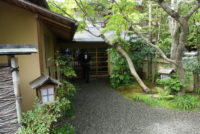
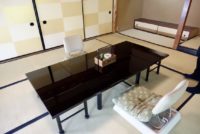
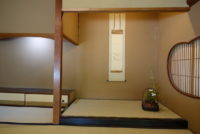
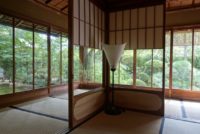
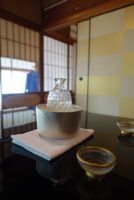
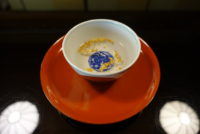
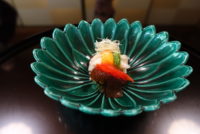
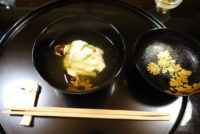
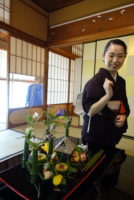
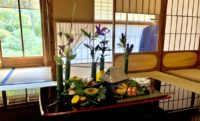

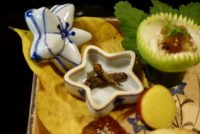
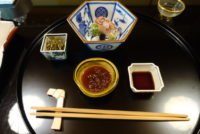
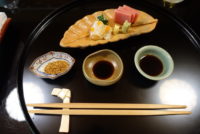
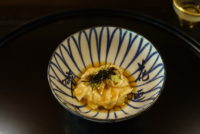
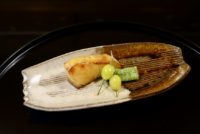
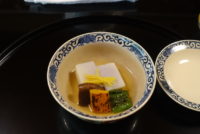
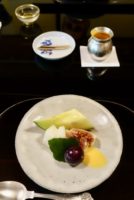
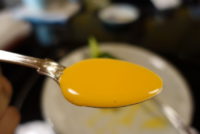
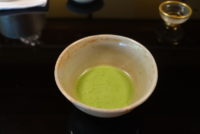
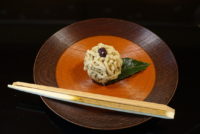
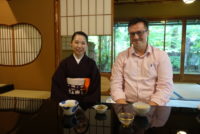

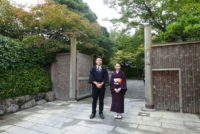
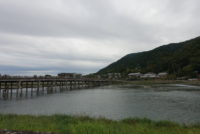
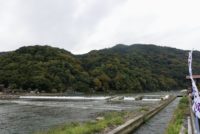
 My hobby-turned-passion began to evolve during my assignments to London where I was fortunate enough to be able to explore all the Michelin starred restaurants in my spare time and as a result, I gradually built up a catalogue of all these venues.
My hobby-turned-passion began to evolve during my assignments to London where I was fortunate enough to be able to explore all the Michelin starred restaurants in my spare time and as a result, I gradually built up a catalogue of all these venues.
Very detailed review, and nice photos. Thank you for the vicarious experience of this special place.